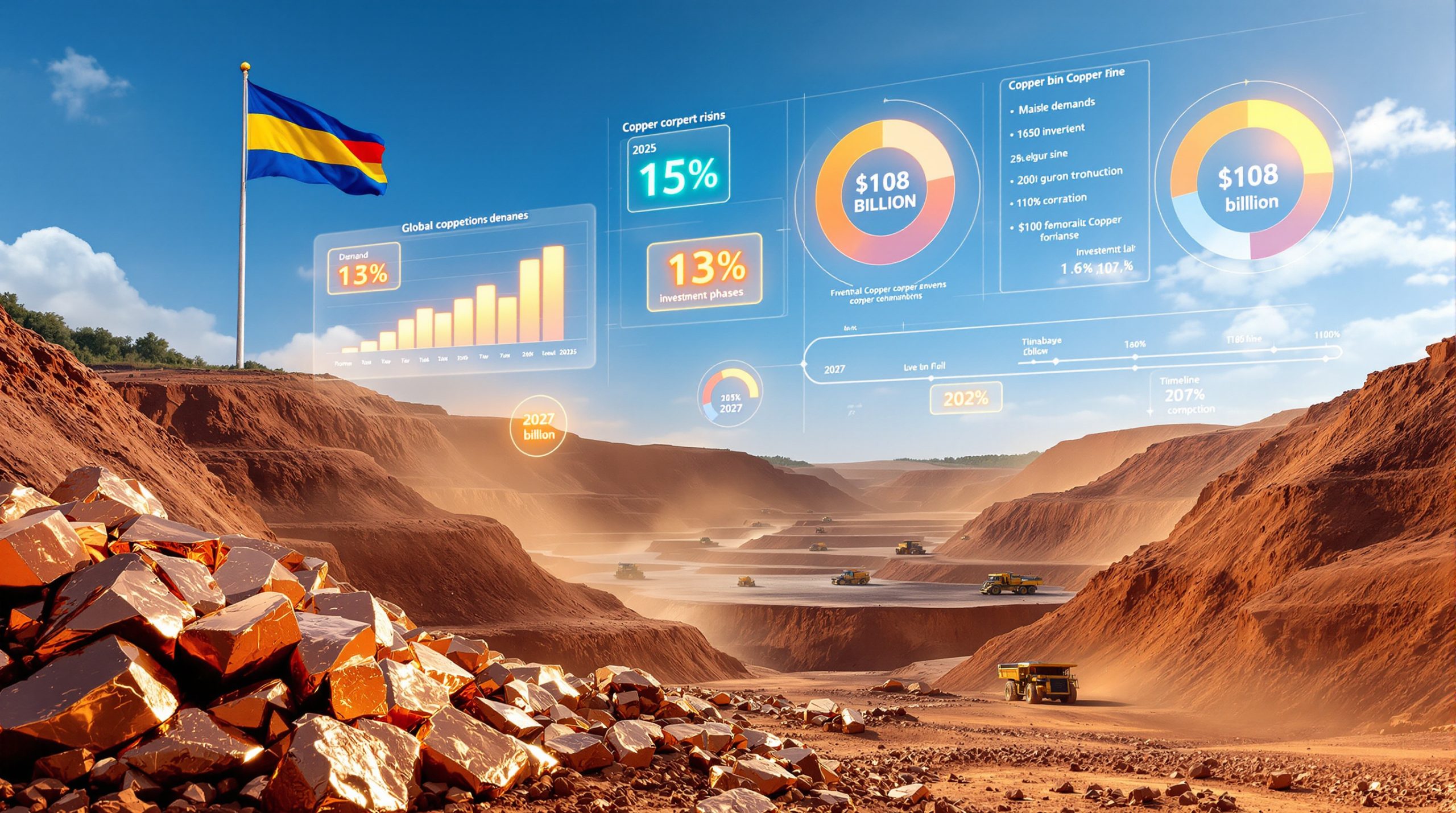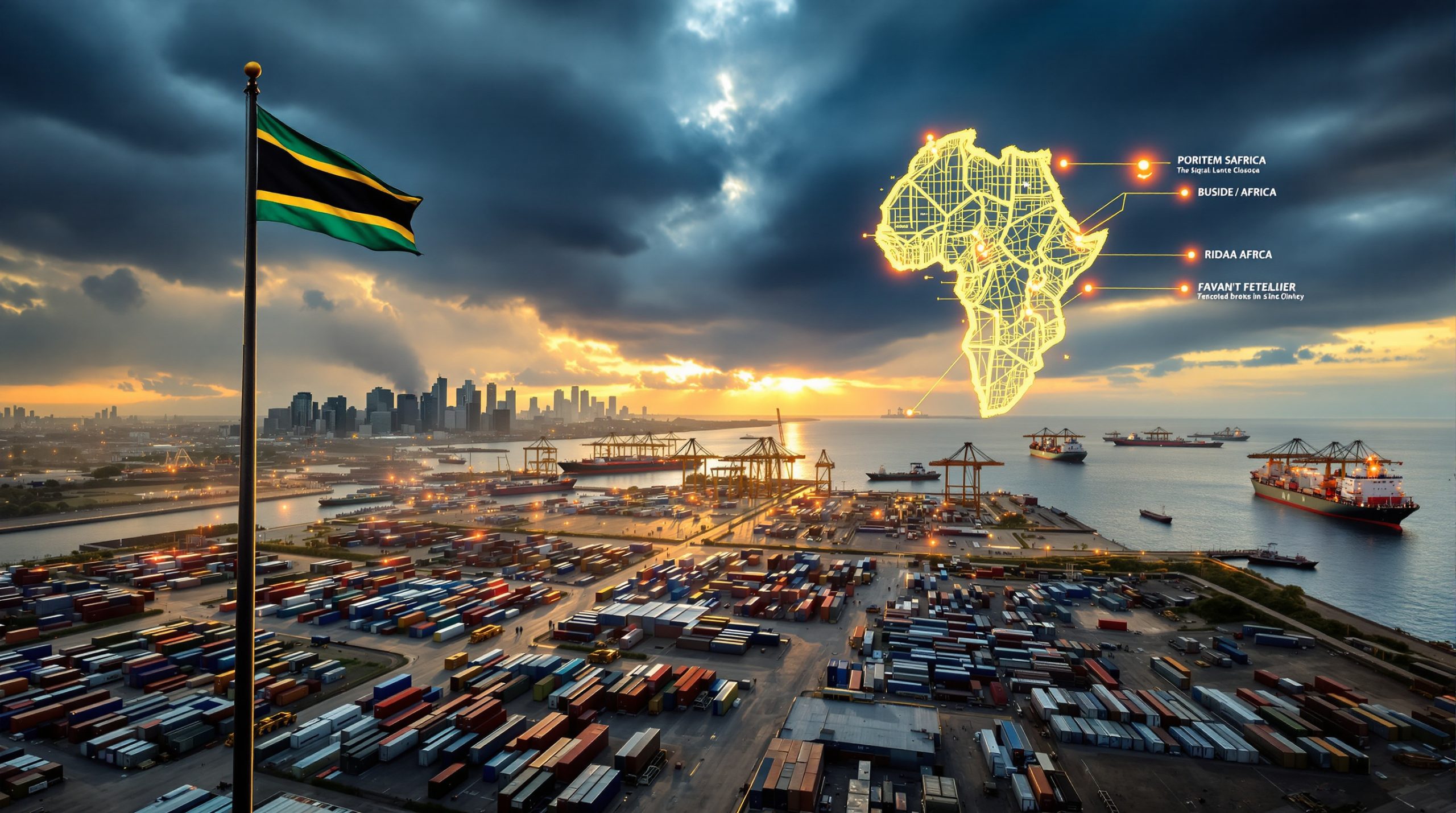Understanding Pakistan's Position in the Global Rare Earth Supply Chain
Pakistan's rare earths supply chain represents a critical frontier in global mineral security, with the country positioned to potentially reshape international sourcing strategies. The Pakistan rare earths supply chain has gained significant attention as nations seek alternatives to traditional suppliers, particularly in light of growing geopolitical tensions and supply chain vulnerabilities.
Pakistan sits atop significant untapped mineral wealth, with geological assessments indicating the country holds substantial rare earth element deposits concentrated primarily in the Balochistan province. The nation's positioning within the Tethyan Belt geological formation presents unique advantages for rare earth exploration, as this mineral-rich zone extends across several countries and has historically yielded commercially viable deposits.
The strategic geographic location between major Asian markets positions Pakistan as a potential bridge between resource extraction and regional manufacturing hubs. This proximity to China, India, and the broader South Asian economic corridor could provide logistical advantages once processing infrastructure develops.
However, Pakistan's rare earth potential remains largely theoretical due to limited exploration coverage across most of its mineral territory. Current geological surveys have only scratched the surface of what lies beneath, leaving significant uncertainty about the true scope and quality of deposits. Furthermore, rare earth reserves differ markedly from established suppliers who have decades of exploration data and proven reserves.
Current Supply Chain Status and Infrastructure Gaps
Pakistan's rare earth supply chain exists primarily at the extraction level, with virtually no midstream processing capabilities currently operational. The country lacks the specialised separation and purification technology essential for transforming raw ore into commercially valuable rare earth oxides and compounds.
Mining operations in remote regions face significant infrastructure challenges that extend beyond simple equipment availability. Consequently, the Pakistan rare earths supply chain confronts numerous barriers to development. These include:
- Power grid limitations restricting energy-intensive processing operations
- Transportation infrastructure inadequate for heavy industrial logistics
- Water resource constraints critical for hydrometallurgical processing
- Skills workforce shortages in specialised metallurgical engineering
The absence of integrated value chain development means Pakistan currently depends on basic ore extraction methods rather than value-added processing. This limitation constrains the country's ability to capture higher margins available further downstream in rare earth supply chains.
Moreover, modern mining technology remains largely absent from current operations, hindering efficiency and environmental compliance. For instance, advanced processing systems could significantly improve extraction rates whilst reducing environmental impact.
What Makes Pakistan's Recent Partnership Developments Significant?
Strategic Investment Initiatives and Infrastructure Development
Pakistan has positioned itself as an alternative supplier in the global rare earth market, attracting international attention for supply chain diversification efforts. Recent developments suggest growing interest from Western partners seeking to reduce dependence on Chinese-dominated processing networks.
Any significant partnership arrangements would likely focus on building processing infrastructure rather than simple ore extraction. The Diplomat reports that such investments typically require substantial capital commitments spanning multiple years, with emphasis on technology transfer and local capacity building.
The development of Pakistan's rare earth sector would represent a strategic shift in global supply dynamics, potentially creating competition for established suppliers whilst providing Western manufacturers with additional sourcing options. However, these developments must overcome substantial supply chain challenges that currently limit operational capabilities.
Geopolitical Implications for Supply Chain Diversification
Pakistan's emergence as a potential rare earth supplier occurs within the broader context of international efforts to diversify critical mineral supply chains. The global rare earth market has historically been concentrated in a few key producing regions, creating supply chain vulnerabilities that governments and manufacturers increasingly seek to address.
The strategic importance of rare earth elements for renewable energy technologies, electric vehicles, and defence applications has elevated supply security concerns among Western nations. Pakistan's potential role in this landscape represents part of a broader realignment of critical mineral sourcing strategies.
Furthermore, Pakistan has reportedly shipped its first rare earth consignment to the United States, marking a significant milestone in the Pakistan rare earths supply chain development. This shipment represents the beginning of what could become a substantial partnership.
Regional balance of power considerations also factor into Pakistan's rare earth development prospects, as the country navigates relationships with both traditional allies and emerging economic partners whilst developing its mineral resources.
| Country | Reserve Estimate (tonnes REO) | Processing Capability | Partnership Status |
|---|---|---|---|
| Pakistan | Under assessment | Limited | Developing |
| India | 6.9 million | Expanding | Strategic dialogue |
| Brazil | 22 million | Moderate | Trade agreements |
| Canada | 830,000 | Advanced | USMCA integration |
How Does Pakistan's Rare Earth Potential Compare Globally?
Reserve Quality and Composition Analysis
Pakistan's rare earth deposits appear concentrated in geological formations that typically contain mixed light and heavy rare earth elements, though detailed composition analysis remains limited. The quality and concentration grades of Pakistani deposits require extensive evaluation to determine economic viability compared to established global suppliers.
Preliminary geological surveys suggest Pakistan's rare earth elements occur alongside other valuable minerals including copper, gold, and various industrial metals. This co-location could enhance economic viability by spreading extraction costs across multiple commodity outputs, potentially improving project economics.
Environmental considerations for sustainable extraction remain a critical factor in Pakistan's rare earth development. In addition, modern rare earth processing requires significant water resources and generates waste products that must be managed according to international environmental standards.
Production Capacity Projections
Pakistan's rare earth production potential depends heavily on infrastructure development timelines and technology acquisition. Short-term output capabilities remain limited to basic ore concentration, with commercial-scale production requiring substantial investment in processing facilities.
Medium-term development scenarios suggest Pakistan could become a meaningful supplier within regional markets, though global market share would likely remain modest compared to established producers. Long-term potential depends on successful technology transfer and human capital development.
Factors limiting rapid scaling include the specialised nature of rare earth processing technology, environmental permitting requirements, and the need for skilled technical workforce development across multiple engineering disciplines. Consequently, industry innovation becomes essential for successful development.
What Are the Key Challenges Facing Pakistan's Supply Chain Development?
Technical and Infrastructure Barriers
The transformation from geological potential to operational rare earth production faces substantial technical hurdles. Pakistan currently lacks the specialised separation and purification technology that transforms mixed rare earth concentrates into individual element compounds suitable for manufacturing applications.
Critical infrastructure requirements include:
- Hydrometallurgical processing facilities for element separation
- Chemical engineering systems for purification processes
- Quality control laboratories for product specification compliance
- Environmental treatment systems for waste management
Power grid reliability presents another significant constraint, as rare earth processing demands consistent, high-quality electricity supply. Remote mining locations often lack access to stable power infrastructure, requiring substantial investment in grid connectivity or alternative energy solutions.
Transportation networks must accommodate both raw material inputs and finished product distribution. The logistics of moving heavy industrial materials to and from processing facilities requires specialised infrastructure that may not currently exist in Pakistan's mining regions.
Security and Operational Risks
Mining operations in Pakistan face unique security considerations that affect operational continuity and investor confidence. Remote mining locations require robust security arrangements to protect personnel and equipment whilst maintaining consistent production schedules.
Regulatory framework development remains essential for creating stable operating conditions that attract long-term investment. Clear mining policies, environmental standards, and permitting processes provide the foundation for sustainable industry development.
"Pakistan's transformation from potential supplier to actual market participant requires coordinated development across technology, infrastructure, and human capital dimensions. Success demands sustained commitment rather than opportunistic resource extraction."
Which Regions Hold Pakistan's Greatest Rare Earth Promise?
Balochistan Province Mineral Corridors
Balochistan province represents Pakistan's most promising region for rare earth development, hosting major mineral projects that could yield rare earth co-products alongside primary commodities. The province's geological characteristics align with formations known to contain commercially significant rare earth concentrations.
Existing mining projects in the region provide potential platforms for rare earth extraction, though current operations focus on copper and gold production. The development of integrated processing facilities could capture rare earth values from existing waste streams whilst building capacity for dedicated rare earth operations.
Transportation and logistics considerations favour Balochistan's coastal access, providing export routes for mineral products. However, infrastructure development requirements remain substantial, particularly for connecting remote mining areas to processing facilities and export terminals.
Northern Territories and Cross-Border Opportunities
Pakistan's northern regions contain geological formations that extend across international borders, potentially creating opportunities for coordinated development with neighbouring countries. These areas may contain different rare earth element compositions compared to Balochistan deposits.
The strategic location of northern territories provides potential access to Central Asian markets, though political and logistical considerations affect development feasibility. Cross-border geological continuity could support regional supply chain integration if properly developed.
Infrastructure challenges in mountainous terrain require specialised engineering solutions and substantial investment. However, successful development could position Pakistan as a regional hub for rare earth supply to multiple markets.
How Will Pakistan's Entry Impact Global Rare Earth Markets?
Supply Chain Diversification Effects
Pakistan's potential emergence as a rare earth supplier would contribute to global supply chain diversification efforts, though the scale and timeline of impact depend heavily on successful infrastructure development. The country's contribution to global supply would likely remain modest in the near term.
Reduced concentration risk for manufacturers represents a key benefit of supply chain diversification. Additional suppliers provide alternative sourcing options during supply disruptions whilst potentially moderating price volatility through increased competition.
Technology transfer opportunities could accelerate Pakistan's integration into global rare earth supply chains. International partnerships focused on technology sharing and capacity building could enable faster development compared to purely domestic efforts.
Investment and Development Timeline
Realistic development timelines for Pakistan's rare earth sector extend across multiple phases, each requiring substantial investment and technical expertise. The progression from exploration to commercial production typically spans several years even under optimal conditions.
| Phase | Timeline | Investment Focus | Expected Output |
|---|---|---|---|
| Phase 1 | 2-3 years | Infrastructure development | Concentrated ores |
| Phase 2 | 3-5 years | Processing technology | Individual elements |
| Phase 3 | 5+ years | Value-added products | Specialised compounds |
Economic impact projections for Pakistan depend on successful completion of each development phase. The country's rare earth sector could contribute meaningfully to export revenues and industrial development if properly developed, though realistic expectations must account for technical and market challenges.
What Role Does Human Capital Play in Pakistan's Mineral Future?
Skills Development Requirements
Pakistan's rare earth development hinges more on human capital than geological resources. The specialised knowledge required for modern rare earth processing demands extensive technical training across multiple engineering disciplines.
Critical skill areas include:
- Metallurgical engineering for process design and optimisation
- Chemical engineering for separation and purification systems
- Environmental engineering for sustainable processing methods
- Data science and AI applications for geological mapping and process control
The country's young demographic profile represents a significant advantage if properly channelled through technical education and training programs. However, bridging the gap between current capabilities and industry requirements demands coordinated educational investment.
International collaboration opportunities could accelerate skills development through technology transfer programs and technical partnerships. Such arrangements provide access to specialised knowledge whilst building local capabilities.
Educational and Training Infrastructure
Pakistan's educational system must adapt to support rare earth industry development through expanded technical programmes and specialised curricula. Universities and technical institutes require updated equipment and faculty expertise to deliver relevant training.
Industry-academic partnerships could provide practical training opportunities whilst ensuring educational programmes align with actual market needs. These collaborations help bridge the gap between theoretical knowledge and operational requirements.
Entrepreneurship ecosystem development supports innovation and technology adaptation within Pakistan's emerging rare earth sector. Start-up incubation programmes and venture capital access could foster technological solutions adapted to local conditions.
Can Pakistan Overcome China's Rare Earth Dominance?
Competitive Advantages and Limitations
Pakistan's potential competitive position in global rare earth markets faces significant challenges when compared to China's integrated supply chain dominance. Chinese operations benefit from decades of infrastructure development, technical expertise, and economies of scale.
Cost structure comparisons reveal the substantial investment required to achieve competitive rare earth processing capabilities. Pakistan must overcome both capital investment requirements and operational learning curves to compete effectively.
Quality and grade considerations affect Pakistan's market positioning potential. Without detailed deposit characterisation and processing optimisation, determining competitive advantages remains speculative.
Market access and customer development require sustained relationship building with international manufacturers. Establishing credibility as a reliable supplier demands consistent quality and delivery performance over extended periods.
Realistic Market Share Projections
Pakistan's contribution to global rare earth supply would likely focus on specific market segments rather than broad-based competition with established suppliers. Niche opportunities may exist where geological or logistical advantages provide competitive positioning.
Partnership-based growth strategies offer more realistic development paths than independent market entry. Collaborative arrangements with international partners could provide technology access whilst reducing investment requirements.
Long-term competitiveness depends on successful integration across the entire value chain rather than simple ore production. The Pakistan rare earths supply chain future requires building capabilities from exploration through final product manufacturing.
However, critical minerals transition globally provides opportunities for new suppliers who can meet environmental and quality standards.
What Environmental and Sustainability Considerations Apply?
Mining Impact Management
Sustainable rare earth development in Pakistan requires comprehensive environmental management systems that address water usage, waste treatment, and ecosystem protection. Modern rare earth processing generates significant environmental impacts that must be mitigated through advanced treatment technologies.
Water resource management presents particular challenges in Pakistan's arid mining regions. Rare earth processing typically requires substantial water volumes for separation and purification processes, demanding efficient recycling systems and alternative water sources.
Community engagement and benefit-sharing arrangements ensure local populations receive appropriate compensation for environmental impacts whilst supporting long-term operational sustainability. These relationships require ongoing attention and genuine community participation.
Biodiversity protection measures must account for Pakistan's unique ecological systems, particularly in Balochistan's fragile desert environments. Environmental impact assessments should guide development planning to minimise ecological disruption.
Sustainable Development Integration
Renewable energy integration offers opportunities to power rare earth processing operations using Pakistan's substantial solar and wind resources. Clean energy adoption could enhance the environmental profile of Pakistani rare earth products whilst reducing operational costs.
Circular economy principles support waste minimisation and resource recovery throughout rare earth processing operations. These approaches reduce environmental impacts whilst potentially improving project economics through resource optimisation.
International environmental standards compliance ensures Pakistani rare earth products meet global sustainability requirements. Certification systems and third-party verification build customer confidence whilst supporting premium pricing opportunities.
Climate change adaptation strategies must account for changing water availability and extreme weather patterns affecting mining operations. Resilient infrastructure design and operational flexibility help maintain consistent production under variable conditions.
Frequently Asked Questions About Pakistan's Rare Earth Supply Chain
How much rare earth does Pakistan actually have?
Pakistan's rare earth reserves remain under assessment, with geological surveys indicating potentially significant deposits concentrated in Balochistan province and northern territories. However, detailed reserve estimates require extensive exploration programmes that have not yet been completed across most of the country's mineral territory.
Current estimates vary widely due to limited exploration data and the theoretical nature of much geological assessment. Proven reserves suitable for commercial development represent a fraction of speculative resources, requiring substantial investment in exploration and feasibility studies.
When will Pakistan become a major rare earth supplier?
Pakistan's timeline for becoming a significant rare earth supplier depends heavily on infrastructure development and technology acquisition. Realistic projections suggest meaningful production could begin within 5-7 years with sustained investment and international technical cooperation.
Major supplier status would require successful completion of multiple development phases, including exploration, processing infrastructure construction, and market development. This progression typically spans 10-15 years from initial commitment to full commercial operation.
What specific rare earth elements does Pakistan produce?
Pakistan currently produces minimal quantities of rare earth elements, with most mineral extraction focused on copper, gold, and other conventional minerals. Future rare earth production would likely include both light rare earth elements (neodymium, praseodymium) and potentially heavy rare earth elements depending on deposit characteristics.
The specific rare earth element composition of Pakistani deposits requires detailed geological analysis and processing trials to determine commercial viability. Different geological formations may yield varying element profiles suitable for different market applications.
How does Pakistan's partnership development affect regional relations?
Pakistan's rare earth development occurs within complex regional dynamics involving multiple international partners and neighbouring countries. Balanced development approaches seek to maximise economic benefits whilst maintaining positive relationships across the region.
Supply chain diversification benefits global manufacturers whilst potentially creating new economic relationships. Pakistan's approach to international partnerships will influence regional stability and long-term development sustainability.
What are the main obstacles to Pakistan's rare earth development?
Technical barriers represent the most significant obstacles, including lack of processing technology, infrastructure gaps, and skills shortages. These challenges require coordinated investment across multiple sectors rather than simple capital allocation.
Security and regulatory considerations affect investor confidence and operational continuity. Stable policy frameworks and consistent enforcement help create favourable conditions for long-term industry development.
Future Outlook for Pakistan's Critical Minerals Strategy
Integration with Global Supply Chains
Pakistan's rare earth development strategy emphasises integration with international supply chains through technology partnerships and capacity building arrangements. This approach provides access to specialised knowledge whilst building domestic capabilities for long-term competitiveness.
Western manufacturer partnerships offer opportunities for direct integration into end-user supply chains, providing market access and technical feedback for product development. These relationships support sustainable growth based on actual market demand.
Regional supply hub development could position Pakistan as a processing centre for rare earth materials sourced from multiple countries. This strategy leverages geographical advantages whilst building economies of scale for processing operations.
Export market diversification reduces dependence on single customer relationships whilst providing flexibility during market fluctuations. Multiple market channels support sustained operations and revenue stability.
Economic Transformation Potential
Pakistan's rare earth sector could contribute significantly to economic diversification efforts, providing high-value exports and supporting industrial development. However, realising this potential requires sustained commitment to capacity building across multiple sectors.
GDP contribution projections remain speculative without confirmed development timelines and investment commitments. Realistic economic impact assessment requires detailed feasibility studies and market analysis.
Employment generation potential extends beyond direct mining operations to include processing, research, and support services. Skilled job creation could support broader economic development in mining regions.
Foreign exchange earnings from rare earth exports could support import substitution and industrial modernisation efforts. However, these benefits depend on successful value chain integration rather than simple ore exports.
"Pakistan's rare earth development success depends on building processing capabilities and human capital rather than exploiting geological resources alone. Sustainable industry development requires coordinated investment in technology, infrastructure, and skills development."
Disclaimer: This analysis is based on available information and industry assessments. Actual rare earth development outcomes depend on numerous factors including technical feasibility, market conditions, and policy implementation. Investment decisions should be based on detailed due diligence and professional advice.
Ready to Discover the Next Critical Minerals Breakthrough?
Discovery Alert's proprietary Discovery IQ model delivers real-time alerts on significant critical minerals discoveries across the ASX, instantly empowering subscribers to identify actionable opportunities ahead of the broader market. Understand why major mineral discoveries can lead to exceptional returns by exploring Discovery Alert's dedicated discoveries page, then begin your 30-day free trial today to position yourself ahead of the market.




